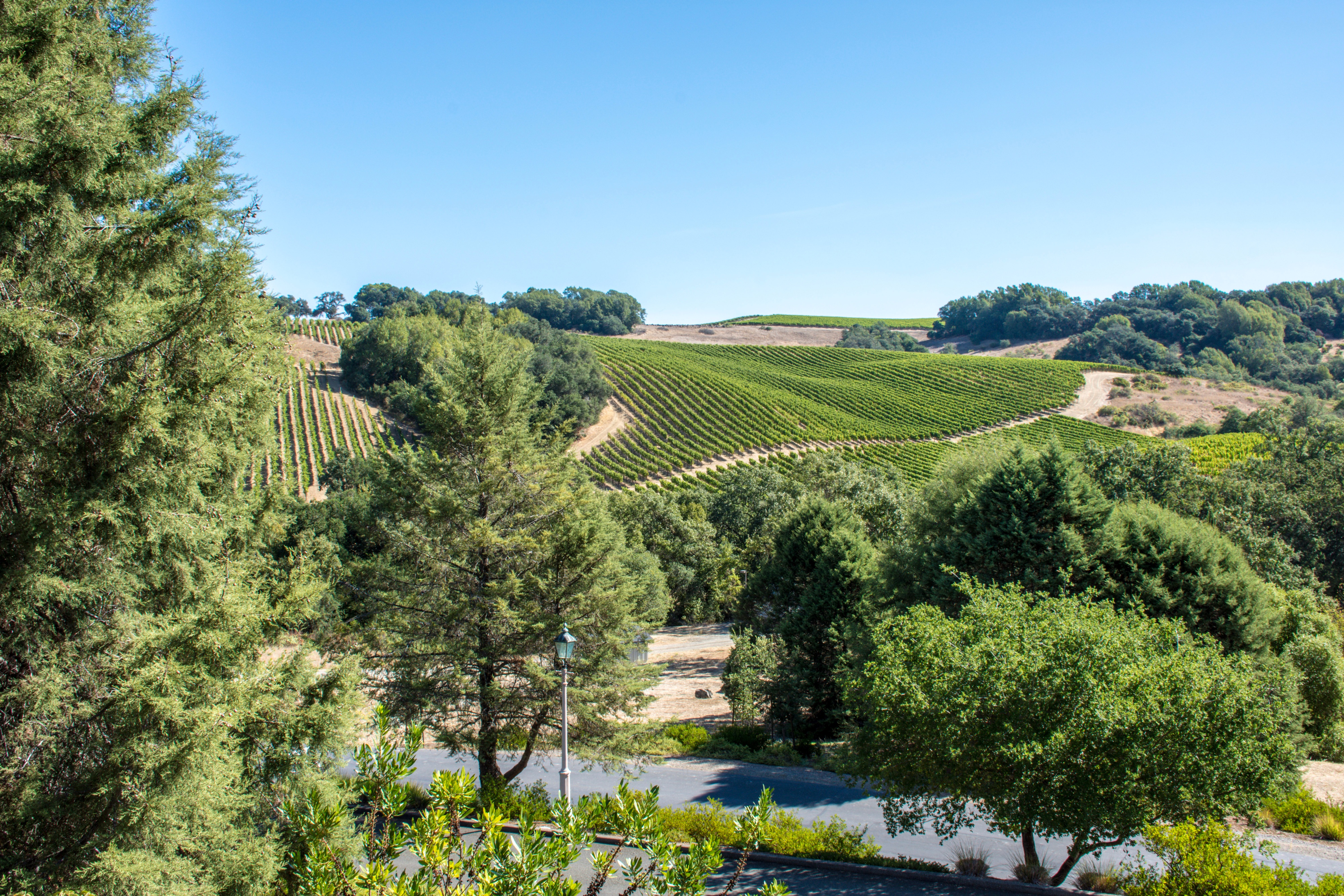Commentary: Oversight plan would burden North Coast vineyards

Winegrapes grow in the Russian River Valley. Farmers say they face onerous water-discharge reporting requirements under a proposal by the North Coast Regional Water Quality Control Board.


By Dayna Ghirardelli
Regulatory compliance is part of doing business when you are a farmer, but when do the mandates become so burdensome that operating a farm may not pencil out? This, no doubt, is a leading question in agriculture these days. Currently, it is a matter front and center for some 1,500 winegrape growers in Northern California who are facing a proposed new order on water-discharge requirements.
If enacted, the draft order from the North Coast Regional Water Quality Control Board would apply to all “commercial vineyards”—regardless of size—in the Russian River and Navarro River watersheds. The water-quality monitoring and reporting requirements as proposed are not reasonable. That’s because the proposal puts the burden of proof solely on the vineyard industry to collect and report data on the sediment load of an entire watershed that can be impacted by numerous uses.
The draft order imposes a one-size-fits-all approach that will be costly and burdensome for winegrape growers in Sonoma and Mendocino counties. It will inevitably impact smaller growers, who could be forced to close their doors if the order is adopted as written.
Consider the way that most farmers work and care for their land. Farmers are thrifty and efficient by nature. Time is money and waste is expensive. When margins are thin, any additional costs are extremely impactful. Farmers don’t want to buy more fertilizer if they don’t have to and they certainly don’t want to waste precious water supplies or pollute the groundwater they depend on with pesticides or nutrients. Additionally, farmers don’t want to lose their valuable topsoil—without it, farming becomes much more challenging.
Our winegrape farmers employ sustainable management practices, including planting cover crops to prevent erosion, building soil health and sequestering carbon to help fight climate change. They winterize their land to minimize runoff in the wet season and use applied nutrients and pesticides sparingly, if at all. Here in Sonoma County, 99% of vineyards are enrolled in a certified sustainable program, under which they are required to use best-management practices to prevent erosion and pollution; these efforts are affirmed by third-party audits.
Requirements laid out in the 171-page draft order include individual “on-farm” monitoring, with drainage structures to be sampled for turbidity after qualifying storm events. The proposal also calls for separate monitoring in tributaries of the Russian and Navarro rivers.
Per statewide mandates for water-quality orders such as this proposal, drinking water wells are to be monitored annually and groundwater is to be tested for pesticides and nutrients, with a trend report due every five years. Ironically, the list of pesticides to be tested under the North Coast draft order includes many that are not used and some that won’t last long enough in the environment to affect groundwater. Additionally, even though winegrapes do not use much nitrogen, the draft order includes an overly complicated nitrogen monitoring and reporting process.
For monitoring and reporting alone, the regional water board estimates costs at about $6 per acre, but industry and resource professionals have provided more real-time estimates of $24 per acre the first year and $9 per acre every subsequent year. This is in addition to on-farm management and project costs.
Farmers are asking the regional water board some important questions: How could something so unreasonably complex be implemented without enormous costs to their operations? Is the benefit of this vineyard permit program going to justify the financial burden on the farmers? Why can’t we have a simpler permit system until the water board identifies sources of sediment in the watershed and creates appropriate standards for the Russian River?
The key question for the draft order is this: Are these requirements going to improve regional water quality?
At the public workshop Aug. 4, winegrape growers let the regional water board know how they would be burdened by these onerous and costly requirements, particularly when multiple factors contribute to the watershed and water quality. Mendocino County Supervisor Glenn McGourty, a grape grower with strong ties to agriculture, offered the board some wisdom. While evaluating this proposed order, he said board members should remember that “you are spending other people’s money.” The words of McGourty and other speakers appeared to resonate.
Afterward, the water board ordered staff to go back and visit local vineyards to learn more about what is happening on the ground so that discharge permit requirements can be reworked to reflect not only different risk factors for erosion and sediment control but also to acknowledge current beneficial management practices employed by farmers. That was a win, but the battle is not over.
(Dayna Ghirardelli is executive director of the Sonoma County Farm Bureau. She may be contacted at dayna@sonomafb.org.)




